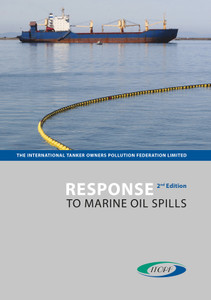
This guide discusses response to a marine or coastal oil spill in ice and snow conditions. It looks at the effects of an oil spill and provides guidance on cleanup strategies and development of response plans.
This guide will assist incident managers and decision makers in implementing an effective response to an oil spill in ice or snow conditions.
It identifies the differences in the behaviour of oil in ice at different times in the ice cycle and in different areas and discusses the effectiveness of the various response options. It provides guidance on planning and preparation for an incident and safe implementation of response strategies.
Foreword
The Guide on oil spill response in ice and snow conditions developed by Norway and Canada in cooperation with the Arctic Council’s Emergency Prevention, Preparedness and Response Working Group (EPPR WG), was finalized at the third session of the Sub-Committee on Pollution Prevention and Response (PPR 3) and was approved by the Marine Environment Protection Committee (MEPC) at its seventieth session in October 2016.
Differences in the behaviour of oil in ice at different times in the ice cycle and in different areas affect every aspect of oil spill response planning and preparation. This Guide aims to identify and describe the key considerations directly associated with a response to a marine oil spill in ice and snow conditions anywhere in the world. By addressing elements of planning and preparedness for marine and coastal oil spills, in addition to the fate and behaviour of oil spills in ice and snow as well as potential response strategies and options, this guide aims to assist incident managers and decision makers in safely implementing an effective response in ice and snow conditions.
The Guide does not consider response strategies needed to respond to oil spills in open-water conditions.
Part I – Introduction
Part II – Developing Response Plans and the Decision Process
Chapter 1: Response objectives
Chapter 2: Stages of a response
Chapter 3: Feasibility: opportunities and constraints
Chapter 4: Net Environmental Benefit Analysis (NEBA)
Chapter 5: The decision process
Part III – Background: Key Planning and Response Elements
Chapter 1: Marine and coastal oil spill scenarios
Chapter 2: Coastal and marine ice environments
Chapter 3: Coastal processes and shoreline types in ice- and snow-affected coastal regions
Chapter 4: Response infrastructure and logistics in ice- and snow-affected marine and coastal regions
Part IV – Oil Spills in Ice and Snow: Behaviour, Fate and Effects
Chapter 1: Oil in ice fate and behaviour
Chapter 2: The effects of spilled oil in ice- and snow-affected marine and coastal environments
Part V – Marine Strategies and Response Options for Oiled Ice and Snow
Chapter 1: Background and introduction
Chapter 2: Detection, delineation, monitoring and tracking
Chapter 3: Mechanical containment and recovery
Chapter 4: Dispersion and Oil-Mineral Aggregates (OMA)
Chapter 5: Controlled burning
Chapter 6: Summary of marine spill response effectiveness
Part VI – Coastal Response in Ice and Snow
Chapter 1: Shoreline assessment and shoreline treatment decisions
Chapter 2: Shoreline treatment strategies and options for oiled ice and snow
Part VII – Oil spill response safety for operations in ice and snow
Chapter 1: Principles of safe operations
Chapter 2: Risk identification and mitigation (checklists)
Chapter 3: Job Safety Analysis
Annex A: Oil Classification
Annex B: Vessel Traffic Patterns in Ice-covered Waters
Annex C: Trends in Oil and Gas Activities in Ice-covered Waters
Annex D: Ice Cycles
Annex E: Possible Vessel Spill Scenarios and Case Studies
As a specialised agency of the United Nations, the International Maritime Organization (IMO) is the global standard-setting authority for the safety, security and environmental performance of international shipping. Its main role is to create a regulatory framework for the shipping industry that is fair and effective, universally adopted and universally implemented.
In other words, its role is to create a level playing-field so that ship operators cannot address their financial issues by simply cutting corners and compromising on safety, security and environmental performance. This approach also encourages innovation and efficiency.
Shipping is a truly international industry, and it can only operate effectively if the regulations and standards are themselves agreed, adopted and implemented on an international basis. And IMO is the forum at which this process takes place.
- Number of Pages:
- 233
- ISBN:
- 9789280116670
- Published Date:
- October 2017
- Book Height:
- 250 mm
- Book Width:
- 210 mm
- Author:
International Maritime Organization
- Preview:
- Yes
- Binding Format:
- Paperback





